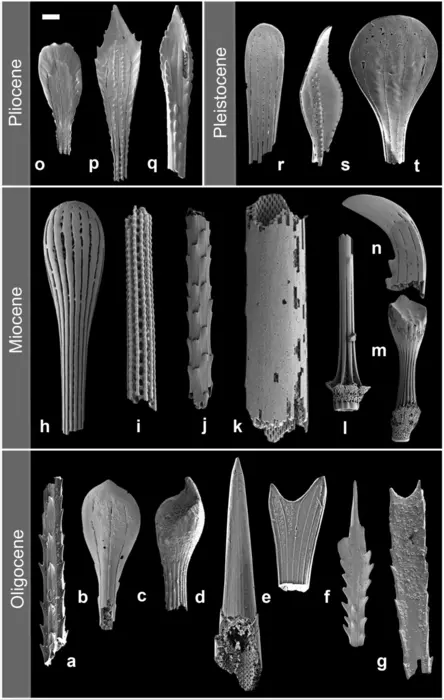In the deep deep sea, researchers have found sea urchin spine fragments from 104 million years ago.
The deep sea is a bizarre place and the probable origin of the first simple forms of life on Earth. Knowing how the number of species living on the sea floor has changed is incredibly important, as some scientists believe that the ecosystems found in the deep sea have emerged time and time again after catastrophic oceanic upheavals and mass extinctions. This all means that life that is found at the bottom of the sea would be very young compared to Earth’s history.
Despite this, there is more and more evidence that parts of the sea are much older than once thought. In fact, a research team has now discovered the first fossil evidence of deep-sea floor colonization by higher invertebrates. What is astounding is that this evidence is from the Cretaceous period, at least 104 million years ago, which means that the deep sea has been continuously populated by sea urchins (also known as irregular echinoids) since this time period.
The fossilized spines of sea urchins were found in over 1,400 sediment samples from boreholes in the Pacific, Southern Ocean, and Atlantic, between 200 and 4,700 meters (656 and 15,420 feet). There were a whopping 40,000 fragments of spines found, identified by their structure and shape.

A range of spines
Image credit: Plos One, 2023 Wiese et al.
The researchers delved into the morphological characteristics of the spines of the samples and compared them to each other. There seemed to be a drastic change at the end of the Cretaceous period 66 million years ago – which was when a devastating meteorite impacted Earth and caused a mass extinction of dinosaurs and disturbances in the deep sea.
The spines after the impact were thinner and less diverse in shape. This is known as the “Lilliput Effect”, when prehistoric organisms that have survived a mass extinction event are often smaller than those that lived before the event. This happens as a smaller species often has a higher survival advantage after the event, possibly due to the lack of food at the bottom of the deep sea.
“We interpret the changes in the spines as an indication of the constant evolution and emergence of new species in the deep sea,” explained lead author of the study Dr Frank Wiese, from the Department of Geobiology at the University of Göttingen, in a statement.
He emphasizes another finding: “About 70 million years ago, the biomass of sea urchins increased. We know that the water cooled down at the same time. This relationship between biomass in the deep sea and water temperature allows us to speculate how the deep sea will change due to human-induced global warming.”
This type of research is incredibly important as it gives more knowledge of the mysterious deep sea.
This study is published in the journal PLOS ONE.
Source Link: First Fossil Evidence Of Deep-Sea Invertebrates From 104 Million Years Ago